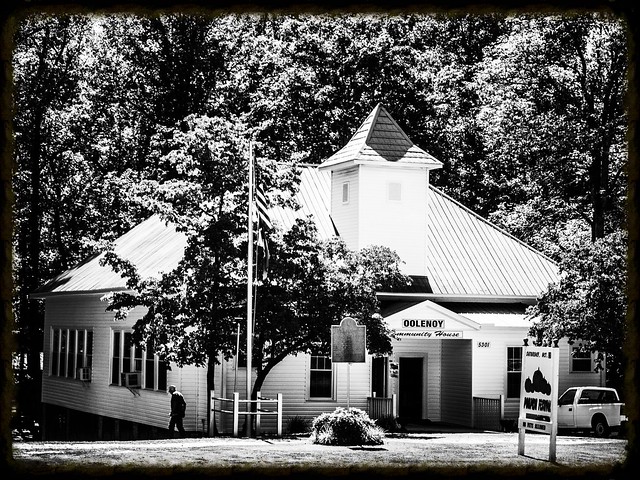
I had just finished up with the Nature Conservancy Hawk Watch up on Caesers Head, but I still had some time to explore. I had several locations marked from the Greenville Survey, as well as some others I wanted to check out. I found more than schools. I found a story of destruction, determination, and rebuilding.
My first, and most productive stop was Oolenoy Community House, located in the old Oolenoy School. This school is the classic early 20th century design with a central bell tower. At first glance the design looks just like the old Wolf Creek School just outside of Pickens.
When I drove by the school a large banner proclaimed the upcoming Pumpkin Festival, scheduled for the second weekend in October. There were folks working to get the school ready, so I pulled in, seeking more information and an opportunity to see inside.
A gentleman was kind enough to let me back in after he had just locked up. He told me his name, and I wish to goodness I had written it down. I was usher into one of the main rooms and shown a wall that was covered with the history of the school.
It turns out that this is actually the third school at this location. The first was a log structure, and the second was a two-story edifice that looked quite impressive. However, on closer inspection I found the information to be confusion. Here’s one photo labeled “Oolenoy School” showing a building similar to the Tuskegee designs with a recessed entryway and with a prominent bell tower.
However, another image labeled “Oolenoy School Students” shows a completely different building. This one does not have a recessed entry, and only has a simple gable over the door.
I guess it’s possible that the students posed in front of a different school, but that doesn’t make much sense. Another class photo shows students gathered at what I first thought was the rear of the building. It turns out that this is a right front oblique, and the building is the same as the first image above.
The photo above is labeled Oolenoy School around 1918, but I know that it be incorrect. Regardless of which of these buildings is the correct one, according to the Pickens Sentinel, the two-story structure burned down in December of 1916.
The phrase “Incendiary Fire” may seem a bit redundant, but the article hints at this as being investigated as arson. Classes resumed in the nearby Oolenoy Baptist Church in January. Construction on a new school began almost immediately, using a design “modeled from a plan given from the state. In every respect it will be an up-to-date structure.” (Pickens Sentinel, January 11, 2017)
The Pickens Sentinel goes on to describe the denizens of Oolenoy Valley…
We know scarcely anything about the Oolenoy valley, but things we have heard about it have created a most favorable impression in our mind.
The people of Oolenoy had a good school building and in some way or other it was destroyed by fire. The citizenship of the valley did not sit down and lament their condition, but with that spirit that always means success they arose with determination so that their children, whom God had given them to train for the very best citizenship, should not be neglected; and before the ashes of the old school building were hardly cool the building of a new and better house began just a few feet from where the other stood.
The people of Oolenoy believe that to give their children a chance to develop their God-given powers is worth more than land and money. it will take more than the burning of a school building to keep such a community down.
The new school building was finished in less than a year. On May 3, 1917, the Pickens Sentinel described its completion in similarly eloquent terms as it described the people of Oolenoy. However, it brought up yet another mystery.
The finishing of a coat of white paint practically completes the replacing of the Oolenoy graded school building that was destroyed by fire a few days before the Christmas holidays. The work was begun the 3rd of January. During that month and the one following the greater part of the work was done – without even a glance at the weather calendar for that length of time we can readily recall those extreme conditions – with stoic perseverance a squad of hands worked at the building while others, with teams, oftentimes ankle deep in mud or with their “shoulder to the wheel” of their own or a neighbor’s wagon, to help out of a bad pull, were engaged in the arduous task of laying down the lumber and other building materials.
The contract was let to W. F Hendricks for the sum of @2,100, but those who are in position to estimate the actual cost are of the opinion that this will fall far short. The material throughout has been the best. The structure is a two-story one, the lower to used for class rooms, the upper to be fitted up as an auditorium. It is modeled from a plan given out by the State and is in every respect modern. Plans abreast of the times were insisted upon. In many respects, it is superior to the old building – mistakes which were made in the one were corrected in the other.
Hmm, so the new building as described is a two-story building?? The current building, which supposedly replaced the one that burned in 1916, is a single-story building. This would make it sound like the picture that I questioned was correct in its date of 1918.
The Sentinel article continues…
The spirit in which the citizens met this crisis which arose at the destruction of their school building is most noteworthy. They had susptained a great loss – the loss of a building which was practically new – a small debt still hung over it. It had been a hard struggle to get it. Many were opposed to the undertaking. They thought that it would be out of keeping with the surroundings – but at last it was built – a pioneer, it stood in all this up-section. With its white coat, rustling as it were among the green hills, cuts of it were shown in educational journals. Passersby noticed and commented on it, and spoke of the progress of the times. All were proud of it. But history is ever repeating itself. Memory goes back to the Judas of the twelve Disciples – to Benedict Arnold of his time, and others of ignoble fame.
For a traitor had likewise arisen in our very midst, and at an early hour on that leaden December night he left that magnificent school house in charred ruins. But thanks and honor to the courage of these citizens who arose with a determination to re-build and to do it better than before – to take another step near toward the ideal – “Truth crushed to the earth will rise again.”
So, I had a dilemma. The problem is that the Chronicling America archives only go through 1922. Unless the school burned AGAIN just after they had rebuilt it, then I wasn’t going to find out what happened. I did find something interesting, though. An article from 1921 compared schools to those of thirteen years prior. The photo of Oolenoy School exactly matches my mystery school above, but not the one labeled “1918.”
I only found one more reference on a random wiki website. It speaks of the opening of a new Ambler-Griffin-Oolenoy School on the Pumpkintown Road in 1957.
The formal opening of the new Ambler-Griffin-Oolenoy Elementary School will take place next Monday morning, Feb. 25, when the first classes are scheduled for the new school.
The new one-story building is of fireproof masonry construction and was built at a $200,000 cost with another $20,000 spent on equipment. The building is located on a 10-acre tract about eight miles north of Pickens on the Pumpkintown Highway and serves student who formerly attended Ambler, Glassy Mountain, Oolenoy, Pleasant Grove and Town Creek Elementary schools.
The school consists of ten classrooms, first aid room, cafetorium, library, principal’s office, conference room and lounges for faculty and students. It was first begun in June of last year.
Most of this I discovered after my visit. I only dropped in briefly, and didn’t want to impose on my host. I’m guessing the answers to the questions would have been answered somewhere in the display materials. I will have to come back.
But, I wasn’t done with Oolenoy – not just yet. My host introduced me to another gentleman working on the grounds (whose name I also forgot.) He had actually attended Oolenoy School through seventh grade. The building was much as it is now. He also listed the other schools in the area. He said that only Rock School was still standing, and that it was located just up the road off of 288. It was now a private residence. In exchange for this information he asked that I help him load his Bobcat onto his trailer.
I left Oolenoy and set off in search of Rock School. I followed the directions given to me, but never spotted the school. It wasn’t until I got back and checked Google Earth that I saw the building. I’ll need to go back. I did stop to take a photo of the old Sid Edens Store in Pumpkintown.
I had one more school to check out, but this one was just over the line in Greenville County. Allison School was also supposed to be off of 288, just past Pace Bridge Road, according to the county historical survey I’d just read. That report also indicated that the building was still there. I drove to the coordinates, but didn’t see anything that looked like a school. The area in question had signs that not only said No Trespassing, but also that the grounds were under camera surveillance. OK. I wasn’t going that way. Again, I found an old abandoned store to photograph.
Pickens County only has a couple of schools listed in the State Archives’ School Insurance Collection. Fortunately, the Pickens County Library has most of the schools on its Flickr page. Looking at the collection I could see that most of the schools in the county in the early 20th century had similar architectural designs. Since this post has gotten long enough, I’ll leave you with images from that collection. This is just a sampling from that collection.



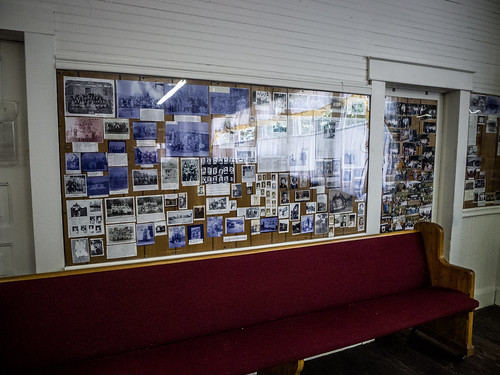

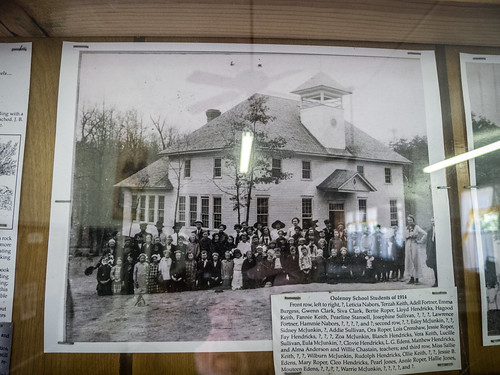
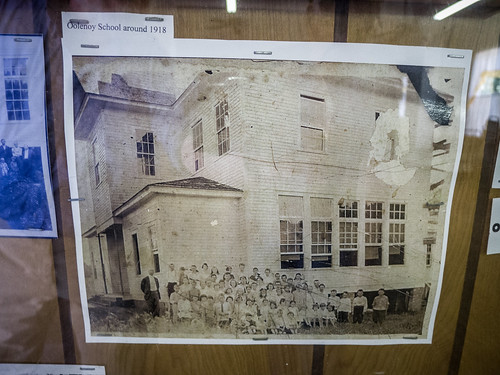

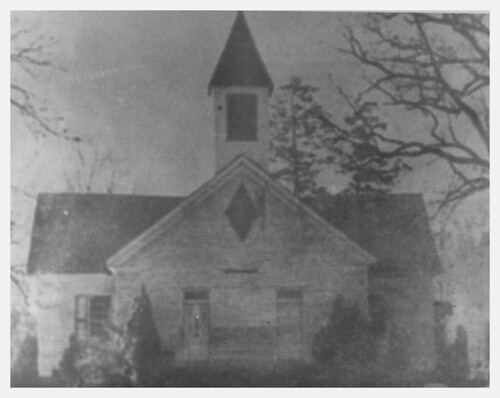


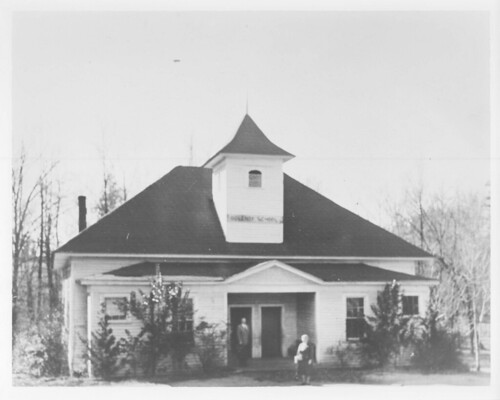


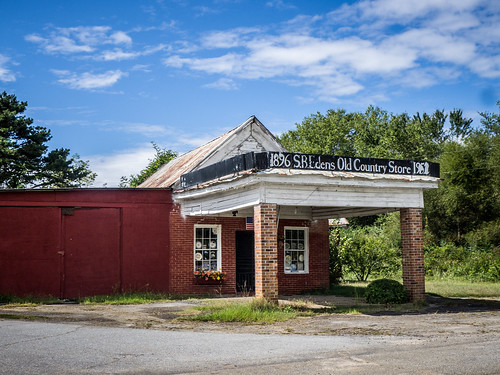
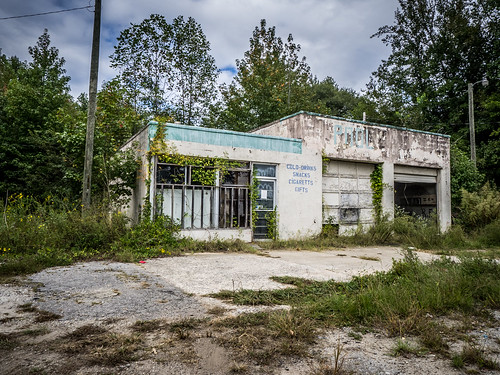
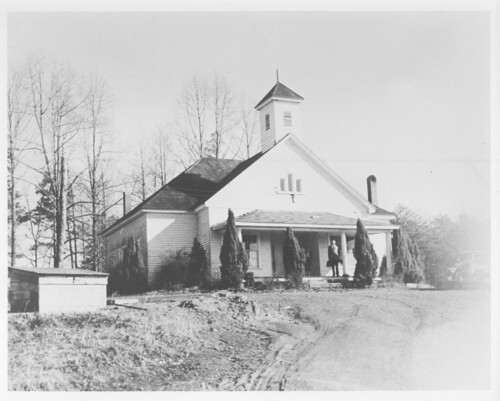
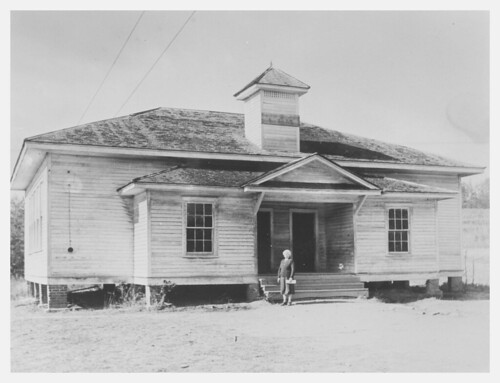
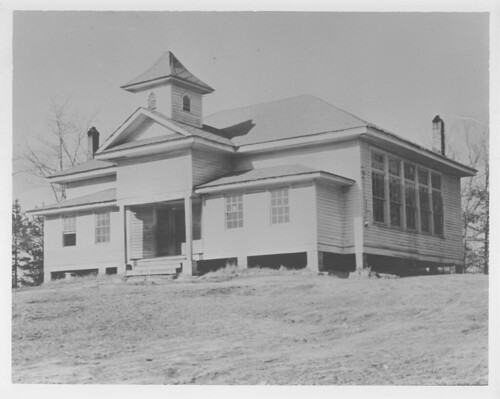
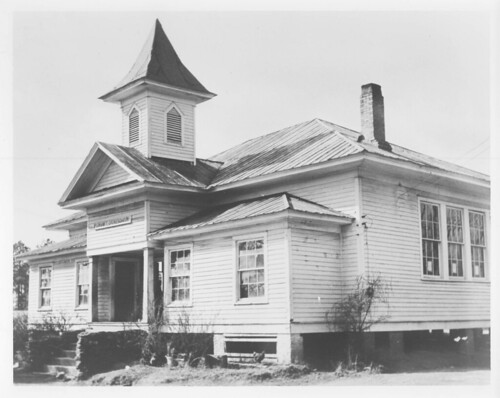
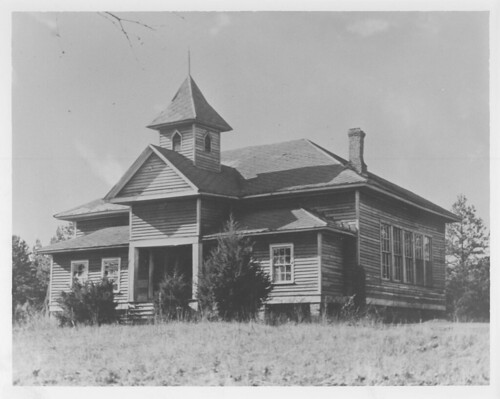
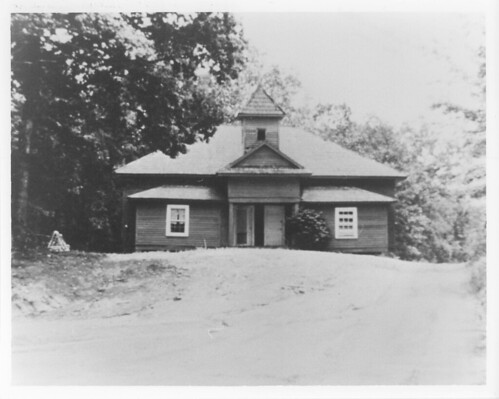
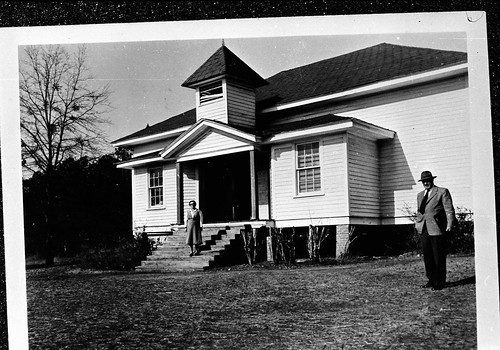
I think that 2013 historical survey may be wrong about Allison School, or they found a different Aliison School than I found.
The 2013 survey says the school is located near the Gray Gables house on the south side of Pumpkintown Hwy. But the 1921 soil survey of Greenville County at the SC digital library locates the school on the north side of the highway. The county property records back that up, and locate the school where the Sage Gayley plant is now. In the early 1950s, the school was sold to an attorney for Gayley Mills in deed book 439, page 51, then transferred to the mill in deed book page 444, page 58.
I was investigating the same thing – what happened to the second story of the Oolenoy community building/school – when I found your website. Great photo collection! Another woman I know who used to work elections when they were held there had the answer concerning the 2nd story. Apparently the current building is the one from 1921’s photo, but the second story was eventually removed. I’d speculate that it was done after the school consolidated into Ambler-Griffin-Oolenoy, as that’s when it would have become a community building. I know many of the families that appear in the photo, including my maternal grandmother and many cousins on both sides. I don’t believe the photo in the 1921 paper was actually taken that year, judging by ages of some of the students. It was probably taken a couple of years earlier, but it is the new building that was built in 1917.